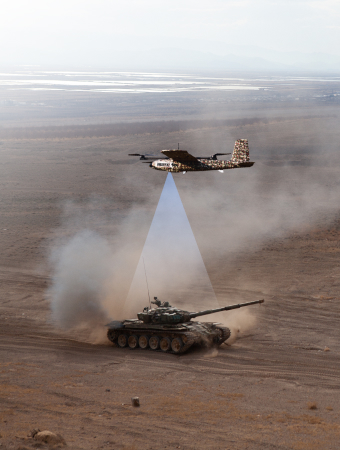Skyhawk Targets Drones: New Operation Revolutionizes Airspace Security. In an era where technology is rapidly advancing, the integration of drones into various sectors has become increasingly common. From military operations to commercial deliveries, drones are transforming how we approach airspace management and security. However, with this advancement comes the challenge of ensuring safety and maintaining control over our skies.
The introduction of Skyhawk's innovative drone targeting system marks a significant leap forward in addressing these challenges. This cutting-edge technology not only enhances surveillance capabilities but also provides a robust solution for neutralizing unauthorized aerial threats. As we delve deeper into this topic, it becomes evident that the evolution of such systems is crucial for safeguarding our airspace against potential dangers posed by rogue drones.
A recent revelation through leaked military documents sheds light on the intricate processes involved in drone strike operations during Obama's administration. These documents expose the mechanisms behind selecting targets and executing missions, raising important questions about transparency and accountability in modern warfare. Understanding these inner workings helps us appreciate the complexity of decision-making at the highest levels of government.
Incorporating creative training missions can significantly enhance pilot skills and readiness. One intriguing idea involves using drones as air-to-air targets, providing pilots with realistic combat scenarios to hone their abilities. Such exercises not only improve tactical proficiency but also prepare them for emerging threats in the ever-evolving landscape of aerial warfare. Community engagement platforms like Reddit have been instrumental in fostering discussions around innovative approaches to aviation training.
Meanwhile, academic institutions continue to upgrade their resources to keep pace with industry demands. For instance, the Department of Professional Aviation introduced a fleet of twelve Cessna Skyhawks in 2017, equipping students with hands-on experience on state-of-the-art aircraft. This initiative underscores the importance of aligning educational programs with technological advancements to produce competent professionals capable of meeting future aviation challenges.
Enhancing Security Measures Through Advanced Technology
In Georgia, law enforcement agencies executed Operation Skyhawk, leading to the arrest of seven correctional officers accused of facilitating contraband smuggling via drone drops within prisons. This operation highlights the growing need for sophisticated surveillance methods to counteract illegal activities conducted through unmanned aerial vehicles. By leveraging advanced detection technologies, authorities aim to deter such offenses and maintain secure environments both inside and outside penal institutions.
Furthermore, defense departments worldwide continuously strive to develop new operational capabilities aimed at countering evolving threats. The DoD publication dated May 12, 2004, outlines strategies designed to combat emerging risks posed by adversaries employing advanced weaponry systems. Emphasizing adaptability and innovation, these guidelines ensure preparedness against diverse forms of attack while promoting international stability.
As part of ongoing efforts to strengthen national defense, research focuses heavily on improving radar technology capable of identifying small moving objects such as drones and cruise missiles. Experts debate whether current fighter jet radars possess sufficient sensitivity to accurately track these elusive targets under varying conditions. Addressing this issue requires collaboration between scientists, engineers, and military personnel committed to pushing boundaries in sensor development.
Pioneering Strategies For Future Combat Aircraft
Fleet Composite Squadron (VC) 8 played a pivotal role in naval aviation history by operating A-4 Skyhawks until its disestablishment in 1995. Among its responsibilities included conducting missile-firing operations involving Firebee drones, which served as essential components during target presentations. Lessons learned from these exercises contribute invaluable insights towards refining contemporary tactics employed by today's armed forces.
Looking ahead, anticipation builds surrounding the capabilities promised by the upcoming B-21 Raider bomber once fully operational. Analysts speculate that this next-generation stealth aircraft will introduce revolutionary concepts enabling unprecedented strategic advantages over adversaries. Harnessing cutting-edge innovations in propulsion, materials science, and avionics promises transformative changes across multiple domains of warfare.
Ultimately, embracing progressive thinking combined with rigorous testing ensures sustained progress in aerospace engineering. Whether enhancing existing platforms or designing entirely novel solutions, collaboration among stakeholders remains key to achieving breakthroughs that bolster global security measures effectively. As demonstrated throughout history, perseverance coupled with ingenuity yields remarkable achievements capable of shaping tomorrow's battlefield realities today.

